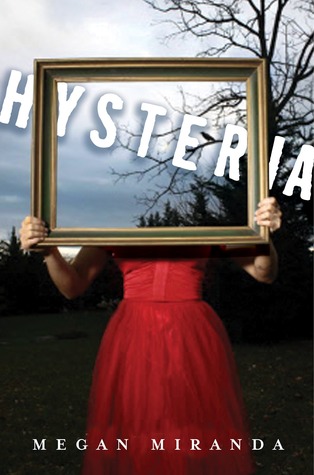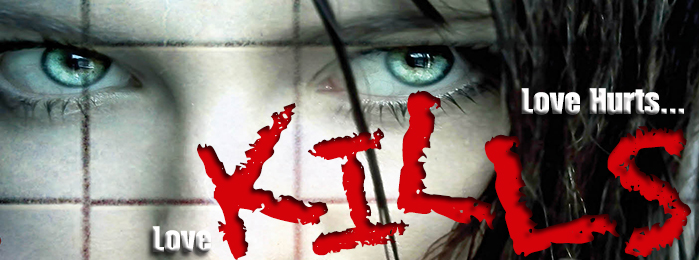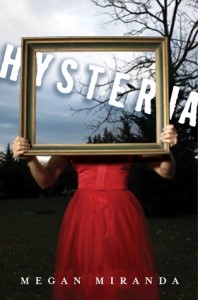Quote This…
“Something lingered in my room. Like the dust hovering in the slant of light beside my bed. Like the air before a thunderstorm. The threat of something coming.”
Hysteria is defined as: a psychoneurotic disorder characterized by violent emotional outbreaks, disturbances of sensory and motor functions, and various abnormal effects due to autosuggestion.
Autosuggestion: self-administered stimuli which reaches ones mind through the five senses.
One more.
Conversion disorder: a mental disorder in which physical symptoms, as paralysis or blindness, occur without apparent physical cause and instead appear to result from psychological conflict or need.
Daunting aren’t they…these four words. Four words that define the possible outcome of trauma. Trauma that was ignored. Covered up. Hidden.
Now imagine struggling through them alone. In a strange place. With nothing but the gravity of your situation to keep you company.
That is the story of Hysteria. Claiming responsibility for caustic actions. Discovering the difference between certainty and delusion. And finding answers, even if they aren’t the ones you want to hear.
“Mallory killed her boyfriend, Brian. She can’t remember the details of that night but everyone knows it was self-defense, so she isn’t charged. But Mallory still feels Brian’s presence in her life. Is it all in her head? Or is it something more? In desperate need of a fresh start, Mallory is sent to Monroe, a fancy prep school where no one knows her… or anything about her past. But the feeling follows her, as do her secrets. Then, one of her new classmates turns up dead. As suspicion falls on Mallory, she must find a way to remember the details of both deadly nights so she can prove her innocence — to herself and others.”
Having loved Megan Miranda’s first novel “Fracture” I was more than happy to take on the responsibility of reviewing “Hysteria.” I am a fan of psychological thrillers. Especially those who knowing or unknowingly (as the case my be…I’m not sure which) pays homage to Edgar Allen Poe’s “The Tell Tale Heart.”
“The room throbbed with the boom, boom, boom just like at home. Same as always. But this time my eyelids fluttered open and I saw it hovering in the corner, starting to take shape. Like a shadow in the darkness, darker than all the rest. I squeezed my eyelids closed again and I thought, Sorry, I’m sorry, I’m sorry, I’m sorry, I’m sorry…because it was the only think I could think. But it didn’t matter because I already knew those words meant nothing. And as I drifted away, I felt the shadow coming closer…closer…”
The short of it is…Mallory killed her boyfriend. He’s not coming back, it’s not a ploy, it’s a fact. She is having a hard time coping with it (understandably) and because of this she forced from her home and sent to live in a boarding school to recollect herself. Unfortunately the hysterical type guilt she feels for her actions (actions that – when it comes right down to it – she has trouble remembering) joins her…in the form of shadows, noises and from time to time even physical injury.
It’s the emotions that are attached to these unfathomable repercussion of guilt that are the driving force behind Hysteria. Is Mallory really losing her mind or is someone stacking situations to make it appear that way? Is her GUILT warranted? Is the ANGER projected at her from every angle warranted?
Miranda skillfully answers these questions (and several more) by combing the speed and thrill of a modern-day murder mystery with the white knuckle roller-coaster ride to insanity through flashbacks. Making this one un-put-downable jaunt through the land of the unknown.
The characters (though at times excruciatingly clichéd) did a wonderful job of conveying a difficult story, and even though (at times) I felt a disconnect with Mallory (mostly because I wasn’t convinced her actions were warranted) I still felt the need to understand the whole truth. To see things from her perspective To understand the depths of despair she felt when looking in the mirror. Which is what great characterization is supposed to do. Right?
In the end…the level of (reading) enjoyment you receive from this book will stem solely on the amount of deception, gore, and panic you can handle. Much like Tahereh Mafi’s novel “Shatter Me” “Hysteria” boast bouts of repetitiveness to signify distress (the quote above illustrates this point beautifully.) A writing quality I particularly enjoy, but other may find irritating.
Thriller junkies will find the twists and turns inside this novel particularly appealing. Everyone else…it won’t hurt your TBR if you decide to add it.
Happy Reading my fellow Kindle-ites and remember: “It is sometimes an appropriate response to reality to go insane.” ― Philip K. Dick (from VALIS)
Click image for additional information
| Rating Report | |
|---|---|
| Plot | |
| Characters | |
| Writing | |
| Pacing | |
| Overall: | 3.8 |








